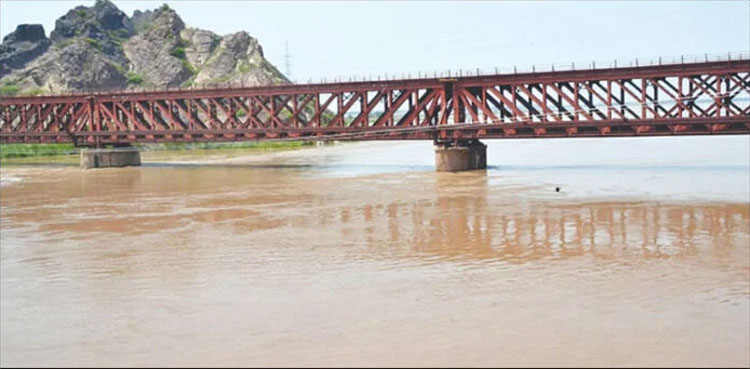India has released additional water into the Sutlej River, causing a flood alert in Punjab due to the rise of water, ARY News reported on Tuesday.
According to details, India issued a warning last night regarding the release of water from the Madhopur Dam and released additional water into the River Sutlej.
The National Disaster Management Authority (NDMA) of Pakistan stated it is closely monitoring the situation.
A spokesperson reported that heavy rainfall is expected in Himachal Pradesh, Uttarakhand, Punjab, and Indian-administered Jammu and Kashmir.
Meanwhile, the floodwaters released by India into the River Ravi have entered Pakistani territory, leading to a sudden rise in water levels at the Jassar point.
In Narowal, 56 people working in fields near the Ravi River were successfully rescued.
A moderate-level flood is currently passing through Jassar, and the floodwaters are expected to reach Shahdara today.
Furthermore, India has released more water into the Sutlej River. A high-level flood has already been reported at the Ganda Singh Wala point. In areas such as Uch Sharif, Arifwala, and Pakpattan, residential homes and hundreds of acres of farmland are now submerged.
Read more: India releases excess water without following Indus Water Treaty protocols
Punjab Chief Minister Maryam Nawaz has directed authorities to ensure the timely evacuation of affected populations.
According to the Flood Forecasting Division, water levels in both the Ravi and Sutlej rivers are continuously rising in Lahore. At Ganda Singh Wala, the Sutlej has reached an extremely high flood level with a flow of 195,000 cusecs. The Ravi River at Jassar is witnessing a medium-level flood with a flow of 88,000 cusecs.
In addition, an alert has been issued following reports that India may also release water into the Chenab River.
In Phalia, Rescue 1122 teams are prepared to carry out relief operations in potentially affected villages. According to PDMA, 22 villages in Tehsil Phalia are at risk, and residents have been advised to relocate to safer areas.










